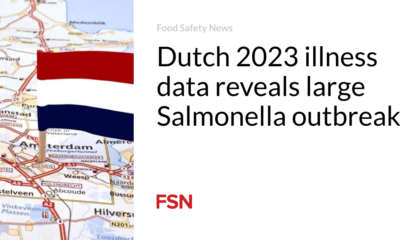Food
Financial data can help target risk-based inspections

A study has found a link between food safety law violations and a company’s weak financial situation.
The work examined the link between the financial situation of Finnish companies and the inspection ratings their food production companies received.
According to the study published in the journal Food Control, financial indicators could help identify companies with cash problems, allowing inspections to be focused on those companies.
The hypothesis was that a weak financial situation would increase the risk of repeat non-compliance and reduce the ability to comply with legislation. A weak financial situation includes delays or difficulties in making payments or the loss of the business.
The research does not prove a causal link between a weak financial situation and the occurrence of non-compliance. However, such a situation is likely to affect the ability to correct problems.
Limited resources
Researchers used food audit inspection reports on meat, fish and dairy locations in Finland from 2016 to 2020 and the public financial statements of these companies. The data includes 612 establishments.
In the Finnish system, the central agency, the Finnish Food Authority (Ruokavirasto), directs control actions with the contribution of regional authorities. Inspections of establishments are conducted at the local level by municipal food control personnel. Results range from an A for Excellent to a D for Poor.
Previous findings have shown that non-compliance requires control measures in fish, meat and dairy businesses. Moreover, correcting problems is sometimes partly insufficient.
Researchers said a risk-based approach was necessary because resources are limited and only 73.2 to 82.7 percent of meat, fish and dairy production companies in Finland are inspected annually.
Of the 612 companies included in the study, 150 had an overall C or D inspection grade for at least two of the five years examined. Of these repeat non-compliance locations, 78 were from the meat sector, 62 from the seafood sector and 10 from the dairy sector.
Of the eight financial indicators examined, seven correlated significantly with the share of general inspection classes C and D, at least for one year.
Data shows that almost a quarter of Finnish meat, fish and dairy factories repeatedly violate food safety rules. Repeated violations were more common in the meat and fish sector.
The role of finance in assessing risk
An analysis found that the low profitability of a food production company implies an increased risk of recurring non-compliance. Also, a food producer’s low liquidity indicates a higher risk of non-compliance in the same year. The research shows that persistently low profitability will affect a company’s solvency and liquidity and reduce its ability to invest in food safety.
In a weak financial situation, it can be tempting to ignore legal requirements to save money. This could be likely if the company does not care about food safety and struggles to maintain sufficient liquidity, researchers said.
Combining financial indicators for targeted food control inspections with approaches already in place, such as assessing the risk of an establishment based on production type and volume, would improve targeting and earlier intervention.
“These financial indicators can be used to identify food business operators who are at greater risk of repeat food safety violations, and inspections can be targeted at them. This could increase the effectiveness of food control,” scientists said.
(To sign up for a free subscription to Food Safety News, click here.)











